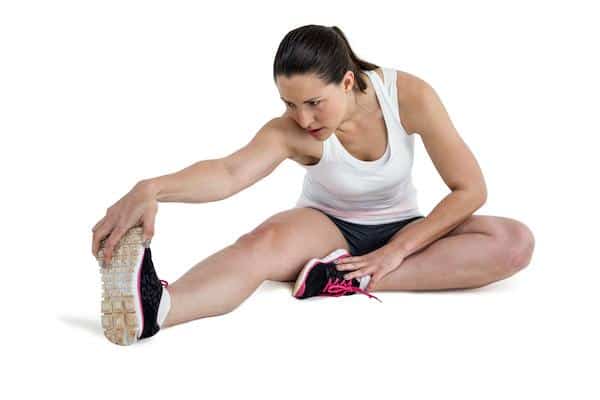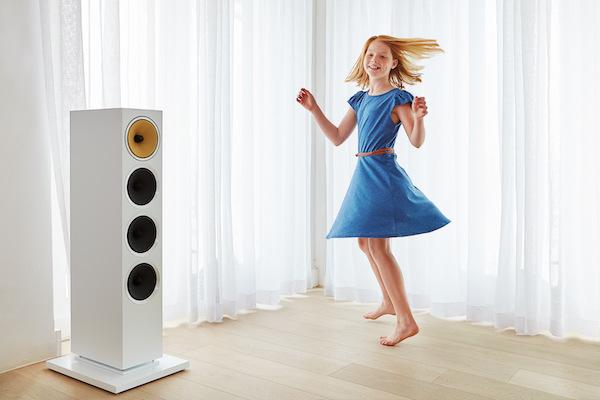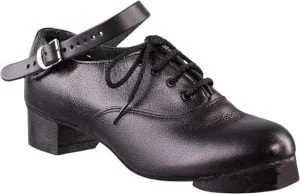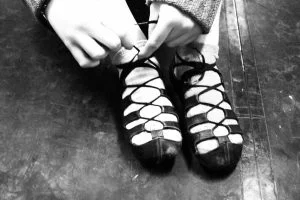Being a supportive Irish Dance Dad requires understanding and appreciating the amount of time, effort, and commitment it takes for your dancer to achieve their goals.
When my daughter first started Irish dance, I didn’t quite understand the level of commitment required. It’s not just about the weekly classes. There would need to be plenty of home practice outside of dance class, countless hours perfecting technique, doing drills, and learning routines.
Whether you just want to improve your dancing, compete in local feis championship level, or become a world champion, in this article I’ll share some of the tips we have found useful and hope that you find some ideas to make your dancer work towards making their dreams come true.
Table of Contents
Toggle
Tips for Practicing Irish Dancing at Home
Being a supportive Irish Dance Dad requires understanding and appreciating the amount of time, effort, and commitment it takes for your dancer to achieve their goals.
When my daughter first started Irish dance, I didn’t quite understand the level of commitment required. It’s not just about the weekly classes. There would need to be plenty of home practice outside of dance class, countless hours perfecting technique, doing drills, and learning routines.
Whether you just want to improve your dancing, compete in local feis championship level, or become a world champion, in this article I’ll share some of the tips we have found useful and hope that you find some ideas to make your dancer work towards making their dreams come true.
Creating a Dedicated Practice Space
The first thing you should do to help your dancer with their Irish dance training is to create a dedicated practice space. This could simply be a spare room in your house, in the garage, or anywhere else that works for you. The idea is to create a mindset that when you enter that space, this time is for practice. This will help you stay focused and motivated during your practice sessions. There are several things to consider when setting up your practice space.
Not everyone has a dance studio in their house, and you don’t need one! We’ve found that you can do drills and learn techniques in an area as small as 3 feet x 3 feet.
What type of dance floor do I need?
When choosing the right flooring, consider a surface that is not too slippery or too hard. Dancing on hard surfaces with no flexibility may lead to knee or other types of injury. If you are a beginner, a large piece of plywood covered with a non-slip mat or carpet can be a good option for your first home dance floor.
As you progress, or if your budget allows, you may want to consider a dance pad or small portable sprung floor.
Should I have mirrors in my home practice area?
If possible, we recommend having a mirror in your practice area. Mirrors will provide visual feedback and allow you to see the areas where your technique needs work.
Mirrors allow you to see yourself from different angles, which can be helpful for identifying areas that need extra attention. The mirror doesn’t need to be big. As long as you can position it to see the parts of your body that you are focusing on and you have good lighting, that’s all you need.
We were fortunate to pick up a large 6 feet x 4 feet mirror from someone who was doing a bathroom renovation. Keep an eye out on local trash and treasure groups and yard sales. You may pick up a bargain.
Warming Up and Stretching
After setting up your dedicated practice space with the right flooring, mirrors, and lighting, it’s time to focus on warming up and stretching. This essential step in your at-home Irish dancing practice routine will help you improve your skills and technique while minimizing the risk of injury.
The Importance of Warming Up and Stretching at Home
Warming up and stretching before exercise or dancing is recommended for several reasons:
- Injury prevention: Warming up increases blood flow to your muscles, preparing them for intense movements involved in Irish dancing. This helps reduce the risk of injuries, such as strains and sprains, even when practicing at home.
- Improved performance: In addition to injury prevention, a well-rounded warm-up routine can enhance your overall performance by increasing flexibility, muscle strength, and endurance—allowing you to make the most of your at-home practice sessions.
- Better technique: When your muscles are warmed up and stretched, you can achieve a greater range of motion—enabling better execution of Irish dance steps and movements while practicing at home
Dynamic Stretches for Irish Dancers at Home
Dynamic stretches are ideal for warming up before practicing Irish dancing at home. They involve movement, which helps you warm up your muscles and prepare them for the demands of dancing.
Here are some dynamic stretches that are great for Irish dancers:
- Leg swings: Stand next to a wall or sturdy furniture for support. Swing one leg forward and backward, gradually increasing the height of the swing. Repeat 10-15 times on each leg.
- Ankle circles: While sitting or standing, lift one foot off the ground and rotate your ankle clockwise and counterclockwise. Perform 10-15 rotations in each direction for both ankles.
- Hip rotations: Stand with your feet shoulder-width apart and place your hands on your hips. Rotate your hips in a circular motion, first clockwise and then counterclockwise. Complete 10-15 rotations in each direction.
- Arm circles: Extend your arms out to the side at shoulder height. Make small, controlled circles with your arms, first forward and then backward. Gradually increase the size of the circles. Perform 10-15 circles in each direction.
This clip from the Ohio State Wexner Medical Center shows some dynamic stretches you may want to include in your warmup routine.
Static Stretches to Improve Flexibility for At-Home Irish Dancers
Static stretches involve holding a position for an extended period, typically 15-30 seconds. My dancer does these after the dynamic stretches because she finds that her flexibility is after dynamic stretching.
- Hamstring stretch: Sit on the floor with one leg extended and the other leg bent, with the sole of the foot touching the inner thigh of the extended leg. Reach for your toes or ankle of the extended leg, keeping your back straight. Hold for 15-30 seconds and switch legs.
- Calf stretch: Stand facing a wall with one foot forward and the other foot behind. Keep both feet flat on the ground and lean into the wall, bending the front knee while keeping the back leg straight. Hold for 15-30 seconds and switch legs.
- Hip flexor stretch: Kneel on one knee with the other foot flat on the ground in front of you. Gently push your hips forward, feeling a stretch in the front of the hip of the kneeling leg. Hold for 15-30 seconds and switch legs.
- Butterfly stretch: Sit on the floor with your feet together, knees out to the side, and the soles of your feet touching. Gently press your knees towards the floor using your hands or elbows. Hold for 15-30 seconds.

Incorporating these warm-up and stretching exercises into your Irish dance practice routine at home can significantly improve your performance and reduce the risk of injury. Remember to listen to your body and never stretch to the point of pain. With dedication and consistency, you’ll notice improvements in your flexibility, technique, and overall dancing abilities in no time.
Focusing on Technique
Now that you’ve warmed up and stretched your muscles, it’s time to shift your focus to mastering your Irish dance technique. In this section, we’ll discuss breaking down key Irish dance movements, practicing foot placement and posture, and utilizing video tutorials and online resources to enhance your at-home practice sessions.
Breaking Down Key Irish Dance Movements
When practicing Irish dance at home, you should break down the key movements so you can understand and execute them. Start by identifying the fundamental steps and movements in your routine, such as jumps, kicks, clicks, shuffles, and turns. Practice each movement slowly and deliberately, focusing on proper form and technique. As you become more comfortable with each movement, gradually increase your speed while maintaining control and precision.
Practicing Foot Placement and Posture
Proper foot placement and posture are important elements of Irish dance technique. To improve your foot placement, pay attention to the positioning of your feet during each step and movement. Make sure that your toes are pointed, heels are off the ground, and feet are crossed when required.
To maintain good posture, keep your back straight, shoulders down and back, and chin parallel to the ground. Engage your core muscles to help maintain stability and control throughout your movements. Practicing in front of a mirror can be beneficial for monitoring and adjusting your foot placement and posture as needed.
Using Video Tutorials and Online Resources
In addition to practicing on your own, there are many online resources available to help you improve your Irish dancing technique at home. Many experienced Irish dancers, world champions, teachers, and instructors share instructional videos and tips on platforms like YouTube and social media. Use these resources to learn new steps, refine your technique, and gain inspiration for your at-home practice sessions.
There are training courses online, like RNH On Demand that do monthly and yearly subscriptions. Subscribers get access to videos resources from former and current world champions as well as the option for 1-1 sessions for an additional fee.
When watching video tutorials, pay close attention to the instructor’s foot placement, posture, and overall technique. Try to replicate their movements as closely as possible, and don’t be afraid to pause, rewind, and rewatch sections as needed.
These tips, combined with a consistent practice routine at home, can greatly improve your skills and technique. Remember that progress takes time and dedication—but you’ll see noticeable improvements in no time.
Incorporating Drills and Exercises
After honing your technique by breaking down key Irish dance movements, practicing foot placement and posture, and utilizing video tutorials and online resources, it’s time to incorporate drills and exercises into your at-home practice routine.
There are no shortcuts—everything is reps, reps, reps.
— Arnold Schwarzenegger
Essential Irish Dance Drills
Incorporating specific Irish dance drills into your practice sessions can help improve your timing, rhythm, and overall execution of movements. Some essential drills to consider include:
-
-
Treble drills: Practice treble movements at various speeds, focusing on the clarity and precision of each sound. Start slowly and gradually increase the tempo as you become more comfortable.
-
-
-
Jump drills: Work on jumps, such as leaps and hops, ensuring proper form and height. Concentrate on pointed toes, straight legs, and controlled landings.
-
Turn drills: Practice various turns, such as spins and pivots, focusing on maintaining balance, proper foot placement, and smooth transitions.
-
Strengthening Exercises for Irish Dancers
Building strength in key muscle groups can enhance your Irish dance performance and help to avoid injury. Consider incorporating the following exercises into your at-home routine:
-
-
Planks: Strengthen your core muscles by holding a plank position for 30-60 seconds, maintaining a straight body line from head to heels.
-
-
-
Squats: Develop leg strength by performing squats with proper form, keeping your knees aligned over your toes and your back straight.
-
Lunges: Improve leg and hip strength by performing lunges, ensuring your front knee stays above your ankle and your back knee hovers just above the ground.
-

Building Stamina with Cardio Exercises
In addition to strength training, incorporating cardio exercises into your at-home Irish dance practice can help build stamina, endurance and increase overall fitness. Some effective cardio exercises for Irish dancers include:
-
-
Jump rope: Jumping rope is an excellent way to build cardiovascular endurance and improve footwork. Aim for 10-15 minutes of jump rope sessions, varying the speed and intensity.
-
-
-
Running: Incorporate short runs or sprints into your routine to develop stamina and leg strength. Focus on maintaining a steady pace and proper running form.
-
Dance-specific cardio: Practice your Irish dance routines at an increased tempo or with added repetitions to challenge your cardiovascular system and build endurance.
-
By integrating these drills, strengthening exercises, and cardio workouts into your at-home Irish dance practice routine, you’ll continue to see improvements in your skills, technique, and overall performance. Remember that progress takes time and consistent effort, so stay dedicated and enjoy the journey of refining your Irish dance abilities at home.
Consider this:
If you were to practice 20 minutes a day, six days a week for a year, you’d have over 100 hours of practice. Imagine the difference that could make!
— Mark, The Irish Dance Dad, IrishDanceWorld.com
Practicing to Music
It would be pretty boring to dance hour after hour in silence, and it’s something that you probably wouldn’t do. Using different types of music is a great way to make things a bit more interesting. Try different styles, rhythms, and tempos. Sure, you won’t be using these songs for your traditional Irish step dancing, but not all performances are traditional. There are lots of contemporary productions that include Irish dance as part of the performance. In this section, we’ll discuss selecting appropriate tunes for practice and using a metronome to develop a strong sense of timing and rhythm.
Selecting Appropriate Tunes for Practice
To enhance your at-home Irish dance practice, generally, you should focus on choosing traditional Irish dance music or modern adaptations that complement the steps you’re working on. Consider the following tips when selecting music:
- Style: Ensure the music style aligns with the specific Irish dance form you’re practicing, such as reels, jigs, or hornpipes.
- Tempo: Choose tunes with a tempo that matches your current skill level. As you progress, you can gradually increase the tempo to challenge yourself.
- Variety: Incorporate a variety of tunes into your practice sessions to keep things fresh and engaging. This will also help you become more adaptable to different rhythms and tempos.
You can find playlists and albums specifically designed for Irish dance practice on various music streaming platforms or by searching online.
Using a Metronome to Develop Timing and Rhythm
A metronome is a valuable tool for Irish dancers looking to develop a strong sense of timing and rhythm. By practicing with a metronome, you can ensure that your steps align with the beat and maintain a consistent tempo throughout your routine.
To use a metronome effectively:
-
-
Start slow: Begin with a slower tempo, allowing yourself to focus on mastering the steps and movements with precision and control.
-
-
-
Gradually increase the speed: As you become more comfortable with the steps, gradually increase the metronome’s tempo to challenge your timing and rhythm.
-
Vary the tempo: Practice the same routine at different tempos to improve your adaptability and responsiveness to various music speeds.
-
By incorporating music and a metronome into your at-home Irish dance practice routine, you’ll enhance your skills, technique, and overall performance. Remember that progress takes time and consistent effort, so stay dedicated and enjoy the journey of refining your Irish dance abilities at home.
Setting Goals and Tracking Progress
Once you’ve decided to start practicing Irish dance, it’s important to set goals for your practice sessions. These can include mastering a new step, improving your flexibility, or participating in a competition.
Set aside some time each week to record your progress and reflect on where you are in relation to your original goal. Use this information to adjust your goals as needed and celebrate your achievements along the way.
Staying Motivated and Consistent
If you’re looking to improve your Irish dancing skills, consistency is key. Create a practice schedule that works for you, whether it’s every day or a few times a week. Join online Irish dance communities to connect with other dancers, share tips, and receive support.
Participate in competitions and performances to showcase your progress and receive feedback from experienced dancers and judges. This will help you stay motivated and push yourself to become a better Irish dancer.
Conclusion
By following these tips and dedicating time to practice Irish dancing at home, you’ll see improvements in your skills and technique in no time. Remember to stay consistent, set achievable goals, and most importantly, have fun as you continue your journey in the world of Irish dance.
FAQs
Q: Can I use any type of music for irish dance practice?
A: It’s best to use traditional Irish dance music or modern adaptations specifically designed for Irish dance practice.
Q: How can I stay motivated while practicing Irish dancing at home?
A: Set realistic goals, join online Irish dance communities for support, and participate in virtual competitions and performances to stay motivated and engaged.
Q: What exercises can help improve my Irish dancing stamina?
A: Cardio exercises like running, cycling, or swimming can help build the stamina needed for Irish dancing.
Q: Do I need a dance floor or studio to practice Irish dancing at home?
A: While it’s ideal to have a dedicated dance floor or a studio to practice Irish dancing, it is not necessary. You can make use of any well-suited open space in your home for practice. You can buy dance mats and small portable sprung flooring.
Q: What is a sprung floor?
A: Sprung floor is a specialized type of flooring designed for dance and athletic activities. It consists of layers of wood, foam, or rubber padding that provide shock absorption and cushioning to reduce the impact on the body. It helps protect dancers from injuries and enhances performance by allowing for comfortable and fluid movements.
Q: Do I need special shoes for practicing Irish dancing at home?
A: While it is recommended to have proper Irish dance shoes for practicing, especially when it comes to hard shoe dancing, you can also start with regular soft shoes or even bare feet to practice the basic steps and movements.
Q: Where can I buy Irish dance shoes?
A: There are several online stores and dance shops that specialize in selling Irish dance shoes. Some popular options include dance stores and Irish dance specialty stores that offer a wide variety of shoes for dancers of all levels.
Q: Can beginners practice Irish dancing at home?
A: Yes, beginners can definitely practice Irish dancing at home. In fact, creating a habit of regular practice at home can greatly speed up the learning process and help beginners build a solid foundation in Irish dancing.
Q: Is it possible to learn Irish dancing without joining a dance studio?
A: While joining a dance studio or taking classes with a qualified instructor is highly recommended for learning Irish dancing, it is possible to learn the basics and practice at home with instructional videos and online resources.
Q: How often should I practice Irish dancing at home?
A: The frequency of your practice sessions will depend on your goals, availability, and personal schedule. However, it is generally recommended to practice at least a few times a week to see noticeable progress.
Q: What are some exercises I can do at home to improve my Irish dancing?
A: In addition to regular Irish dance practice, you can supplement your training with exercises such as pilates, yoga, and strength training to improve your overall flexibility, strength, and balance.



